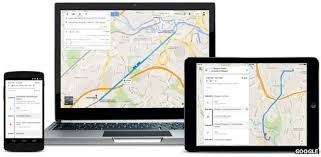Google Maps adds Great Britain public transport data – Leo Kelion
Kusoro Jeremiah with agency report
Google has added coast-to-coast public transport information for the whole of Great Britain to its Maps app.
It said the data included departure times and routes for buses, ferries, trains and trams in England, Scotland and Wales. Google said this was the single largest transit update that it had made to its Maps service.
It is not the first app to do so. Rome2Rio’s UK Transport Search app already provided similar coverage. But the body supplying the data said that the huge popularity of Google’s service meant its move was significant.
“It’s an amazing shop window for our operators’ services,” said Julie Williams, chief executive of Traveline – a partnership of Great Britain’s transport operators and local authorities.
“The presentation and way Google has pulled together the data looks exceptional – we’ve not seen anything like that before.”
The search giant will also make the information available via its desktop Maps service.
Of the other big-brand services:
Nokia’s Here Transit also uses some of Traveline’s data but is limited to the mainland, meaning its excludes ferries to the Isle of Lewis among other routes.
However, Nokia does include live train
information rather than the timetable information used by Google Apple does not currently offer public transit information in its maps software.
Microsoft’s Bing Maps does offer information about a limited number of UK operators, and recently contacted Traveline to discuss adding more . Google uses the transit data to illustrate the differences between the options available.
“Google is the all-dominant leader in mapping, but it has to keep innovating because that’s what stops its competitors nibbling into its
market share,” said Chris Green, principal technology analyst at the Davies Murphy Group consultancy.
“If it doesn’t keep making changes it would leave the door open for somebody else.”
Mind the gaps: While Google had previously provided transit data for parts of Great Britain, it had lacked coverage in much of Wales, the Midlands and northern England.
A search for transport between Llandysul and Cenarth, for example, brought up no results despite it taking less than an hour to travel between the two Welsh destinations by bus.
Gaps such as this have now been plugged, with the firm using Traveline’s data to create graphics that compare how the various available options differ.
In total, schedules from nearly 1,500
different transport operators have been integrated, including more than 17,000 different routes and more than 330,000 pick-up points.
“It’s a frightening amount of data,” Google’s public transport product manager David Tattersall told the BBC.
“It’s every single train, bus, tram and ferry right down to the small request stops as well as the major National Express coaches.”
Google Now: Traveline was created in 2000, and has allowed the public to search its timetables via the state-funded but basic-looking Transport Direct website or by calling its call centres.
It also began offering others access to its raw data three years ago.
“I was surprised initially that we didn’t get more people taking it,” said Ms Williams.
“Open data users said they wanted to do stuff with it, but after we produced it they said: ‘Well, that’s quite complicated.’
“One of the things that Google is able to do because of its size is put money into processing that data and bring it into its own system.”
While Rome2Rio’s app sometimes has to redirect users to the Transport Direct site, Google avoids this by converting all Traveline’s data into the General Transit Feed Specification (GTFS) file format its systems recognise.
Google says it can now plan a journey from coast to coast of Great Britain.
This means it can also make the information available to other app creators via its Maps application programming interface.
This is provided free of charge to services with relatively low traffic but at a cost to others.
“Third-party developers will be able to take advantage of this and basically mash up [their services] with the API,” Mr Tattersall said.
He added that Google would also use the data to enhance its own anticipatory search service, which suggests information before a user
asks for it.
“If you’re in Sheffield but live somewhere else, around home time Google Now will use this transit data to suggest some ways back,” he gave as an example.
For the moment, such results are based on preset timetables rather than live transport information, with the exception of London where real-time data is used.
But Mr Tattersall said that his team was keen to make the wider transit service more reactive in the future.



